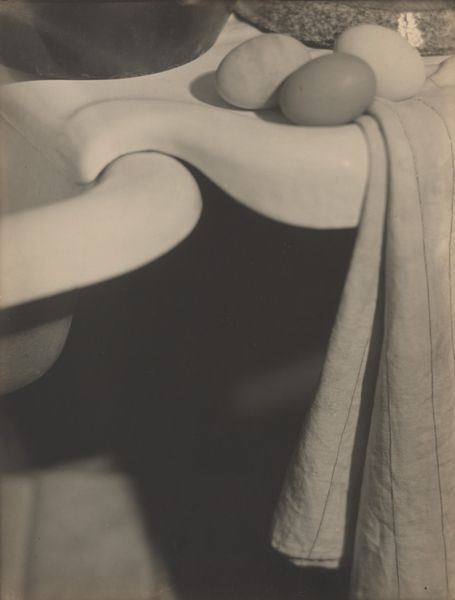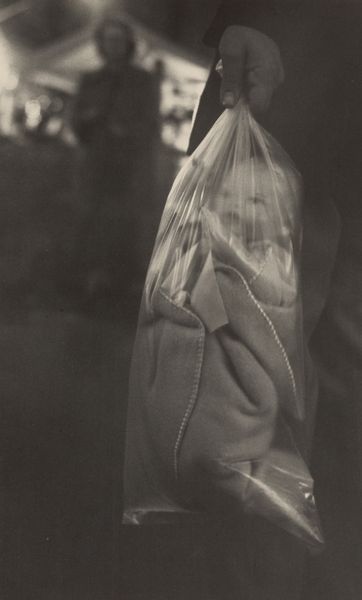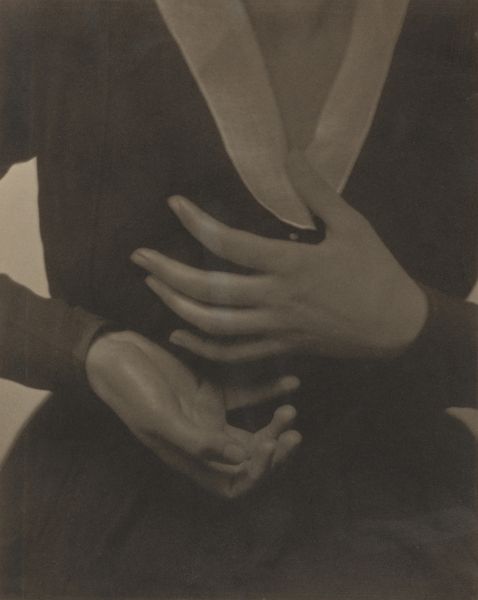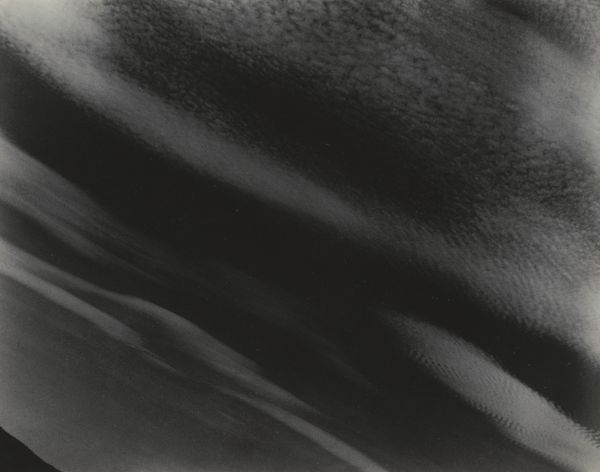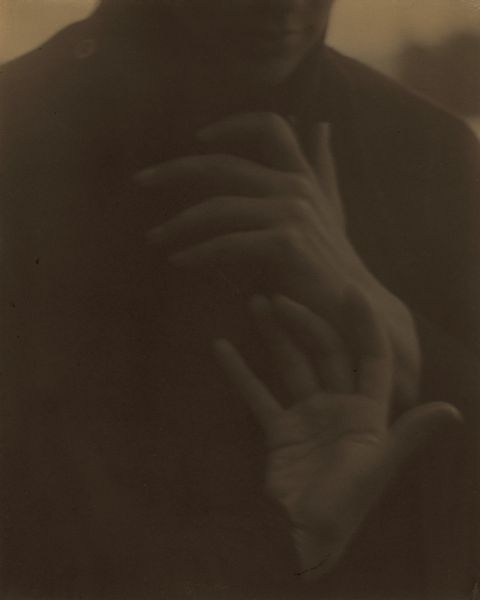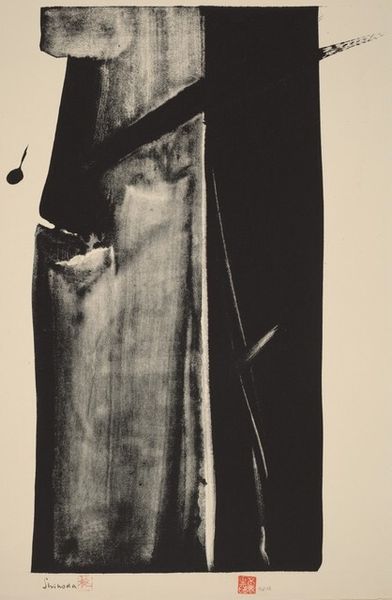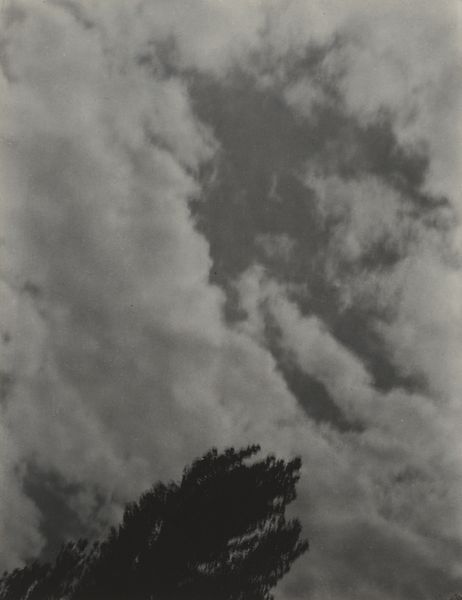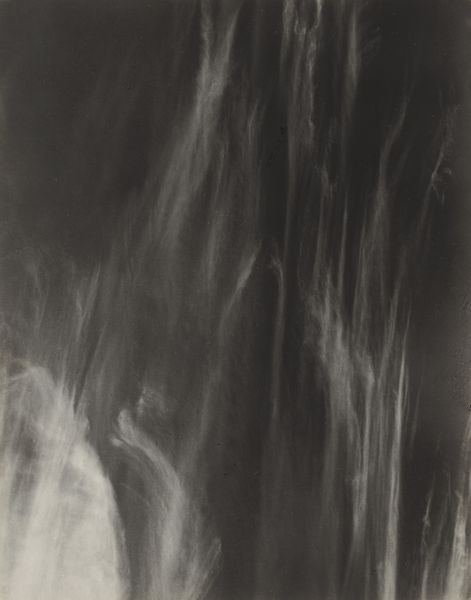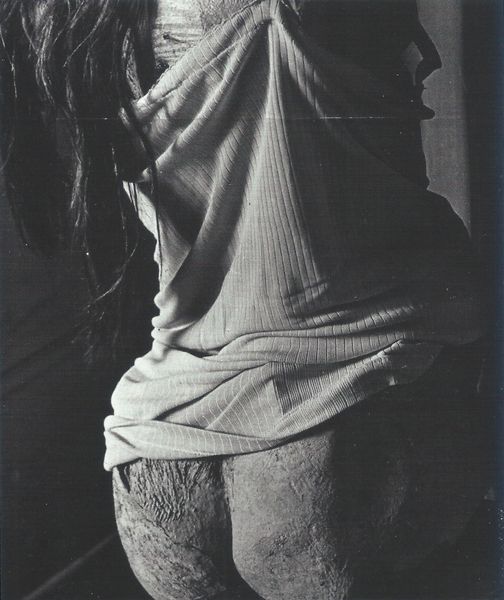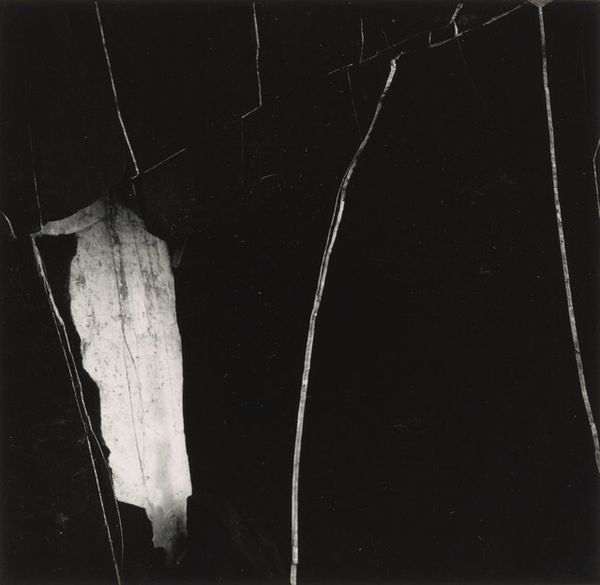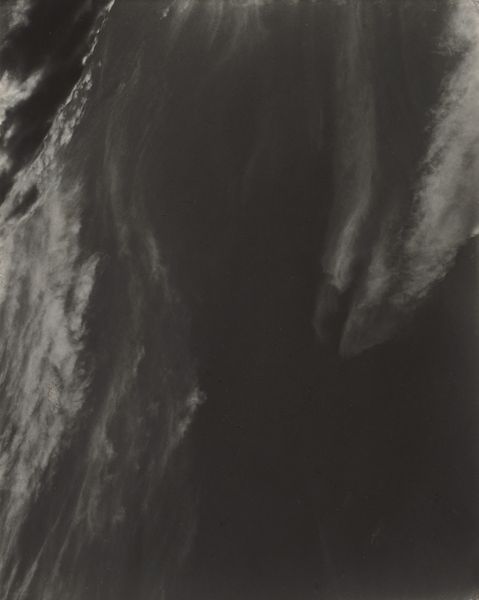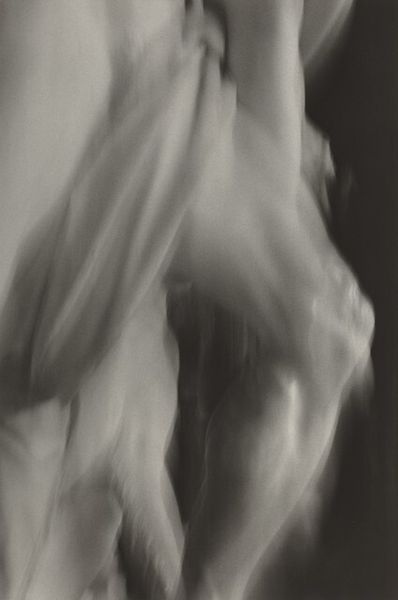
photography
#
monochromatic
#
black and white photography
#
pictorialism
#
black and white format
#
b w
#
dark monochromatic
#
photography
#
black and white theme
#
geometric
#
black colour
#
black and white
#
monochrome photography
#
monochrome
#
modernism
Dimensions: sheet (trimmed to image): 11.5 × 8.9 cm (4 1/2 × 3 1/2 in.) mount: 34.2 × 27.5 cm (13 7/16 × 10 13/16 in.)
Copyright: National Gallery of Art: CC0 1.0
Curator: Alfred Stieglitz's 1924 photograph, "Long Underwear, Lake George," offers a curious perspective. What are your immediate thoughts on it? Editor: Initially, I find it very intimate and surprisingly sensuous. The draping fabric and the stark monochrome give it an almost sculptural quality. It seems so modern. Curator: Indeed. Stieglitz, through his work, constantly pushed photography beyond simple representation. He found abstraction in everyday objects, emphasizing their inherent qualities. Think about the ribbed texture of the fabric, its material presence, transformed through light and shadow. Editor: It's interesting to consider how he elevated this humble undergarment to the level of fine art. I am curious to contextualize this against the backdrop of early 20th-century views on women’s bodies and roles. This piece provokes me to consider how the mundane and intimate aspects of women’s lives might reflect societal expectations and power dynamics. Curator: Absolutely. Consider the labor involved in the production of this garment and others like it at that time. It also hints at the industrial changes influencing personal consumption, creating a mass culture around previously hand-crafted items. The very availability and uniformity of such garments changed domestic life. Editor: It strikes me as a departure from his more well-known portraits of Georgia O'Keeffe, yet it holds the same sense of intimacy and observation. Stieglitz seemed preoccupied with uncovering the extraordinary in the ordinary, revealing personal narratives of modern American life. This reminds me to consider not just the photograph's aesthetics but its implications on social values and cultural representations of femininity at the time. Curator: That tension—between the personal and the impersonal, the handcrafted and the mass-produced—is a vital theme in Stieglitz’s oeuvre. Editor: Yes, I agree completely. Reflecting on our discussion, Stieglitz pushes us to examine how seemingly straightforward images can open avenues into considerations of gender, materiality, and shifts in culture, inviting a complex investigation into the historical moment captured. Curator: Stieglitz presents us, still today, with ways to interrogate our own assumptions about material and art production itself, opening opportunities for us to continually reinterpret what we find before us.
Comments
No comments
Be the first to comment and join the conversation on the ultimate creative platform.

